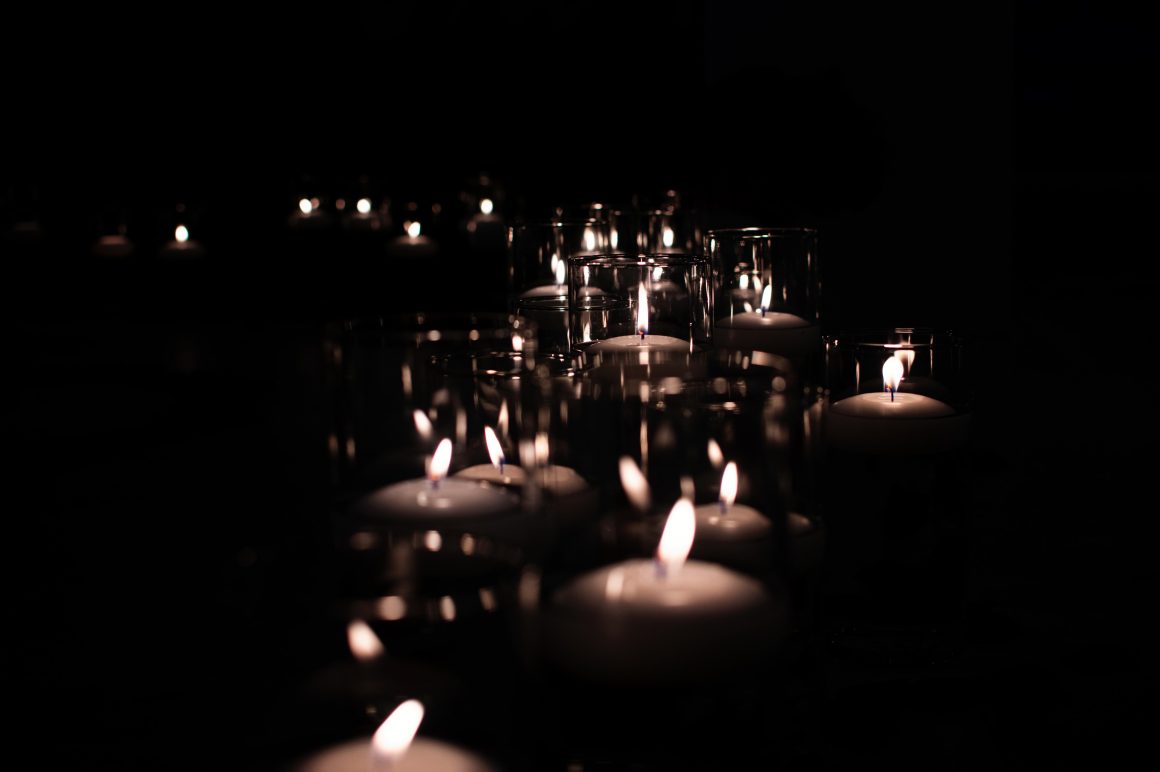
Candlelight Vigil for mass grave found at Kamloops Indian Residential School
By Eula Mengullo, June 18 2021—
On May 29, Calgarians paid tribute to mourn the unearthing of the remains of 215 children in an unmarked burial site in Kamloops Indian Residential School, confirmed by the Tk’emlúps te Secwépemc First Nation. The Candlelight Vigil hosted an estimate of 200 people, which included a prayer, traditional singing and drumming and saw 215 pairs of shoes placed on the steps of Calgary City Hall to symbolize the number of children’s remains discovered through the use of ground penetrating radar device.
In a statement, the University of Calgary President and Vice-Chancellor Dr. Ed McCauley, urged the campus community to “never forget” the dark legacy of the residential school system.
“Children were buried en masse in a place that masqueraded as a schoolyard. Their lives were taken from them and their loved ones, from the communities they were torn from — communities that cared for them, communities that mourn them still,” McCauley said.
Vice Provost for the Office of Indigenous Engagement at the U of C, Dr. Michael Hart, said that the discovery of the burial site is “not unexpected” and many in the First Nation communities have actually spoken about these atrocities in the past.
“Many of us have spoken of such atrocities over the years. First Nation communities in many places have known and spoken of such sites. By coming to know these feelings, this atrocity and the history behind it, many of us hope we will move to transforming our journey together,” Hart said in a statement.
Similarly, Dr. Cora Voyageur, a Sociology professor at the U of C, explained that mass graves of residential school students have long been talked about in Indigenous communities, as children who attended the schools often did not return. Voyageur discussed that many investigations on missing children remained futile due to a collusion between the government, churches and the police. She also emphasized that Indigenous parents had no recourse over their children’s attendance at residential schools as it was government-mandated.
In a time of national reckoning, Voyageur remarked that there has to be understanding and compassion.
“I would like Canadians to have compassion and understanding for [Indigenous] people who love their children just as much as mainstream parents love their children,” Voyageur said. “And this was not the fault of the parents. It was the fault of the government, churches and police who disregarded the rights of Indigenous people and who were involved in this harmful system meant to try to ‘kill the Indian in the child,’ and in some cases, actually killed the child.”
The Kamloops Indian Residential School operated from 1890 to 1969 and was once the largest residential school in Canada.
Residential schools were a method of the federal government’s systematic policy to assimilate Indigenous children into mainstream society rooted in the racist assumption that their own cultures were inferior.
Dr. Yvonne Poitras Pratt, Associate Professor at the Werklund School of Education at the U of C and current Director of Indigenous Education, explained that while residential schools were touted as educational, they had an underlying mandate to eradicate Indigenous children’s cultural values and identity. Among other kinds of maltreatment, survivors experienced various forms of abuse — physical, sexual and emotional — along with cruel methods of punishment, which continue to produce an impact on Indigenous peoples and communities.
“You’ve got children that were raised without love. They were stripped, forced from their families — raised without love, raised in a climate of abuse,” Poitras Pratt explained as she discussed the intergenerational trauma inflicted on survivors and their descendants.
While the government has a primary role in rectifying Canada’s colonial past, Poitras Pratt emphasized that all Canadians should engage in implementing the Truth and Reconciliation Commission’s Calls to Action, by first educating themselves on the country’s true history. She also acknowledged the importance of teaching a mandatory Indigenous course for prospective educators, as well as for all university students to produce a generation of better-informed individuals. As an educator herself, she believes that it is through education that Canadians can begin to dismantle the colonial past of Canada.
“As Canadians, we have to take off this veil of innocence and really start to examine the troubling racist undertones that we have in our society, and we contribute to this racist undertone by not speaking against it,” Poitras Pratt remarked.
In her final statement, she addressed that claiming the right to Canadian citizenship comes with the responsibility to learn and know about the country’s dark colonial legacy.
“If we’re going to make Canada as all it can be, we have to start with the First Peoples. Because the way that we treat the First Peoples is how we will treat [new] people that come to this land,” Poitras Pratt stated.
The discovery of the Kamloops mass burial site has resurfaced past traumas for survivors, Indigenous peoples and communities. For additional support and assistance, resources are available here.
